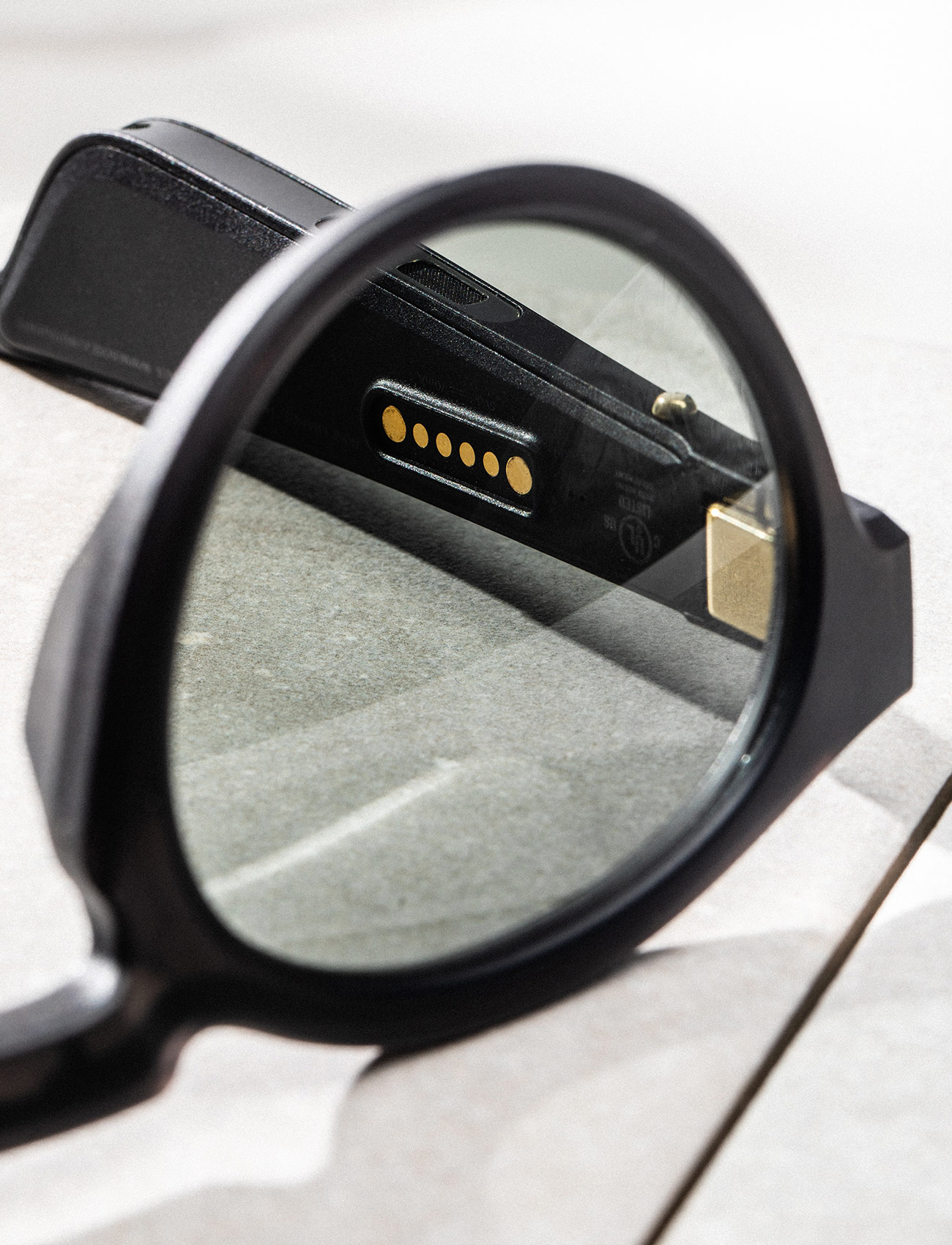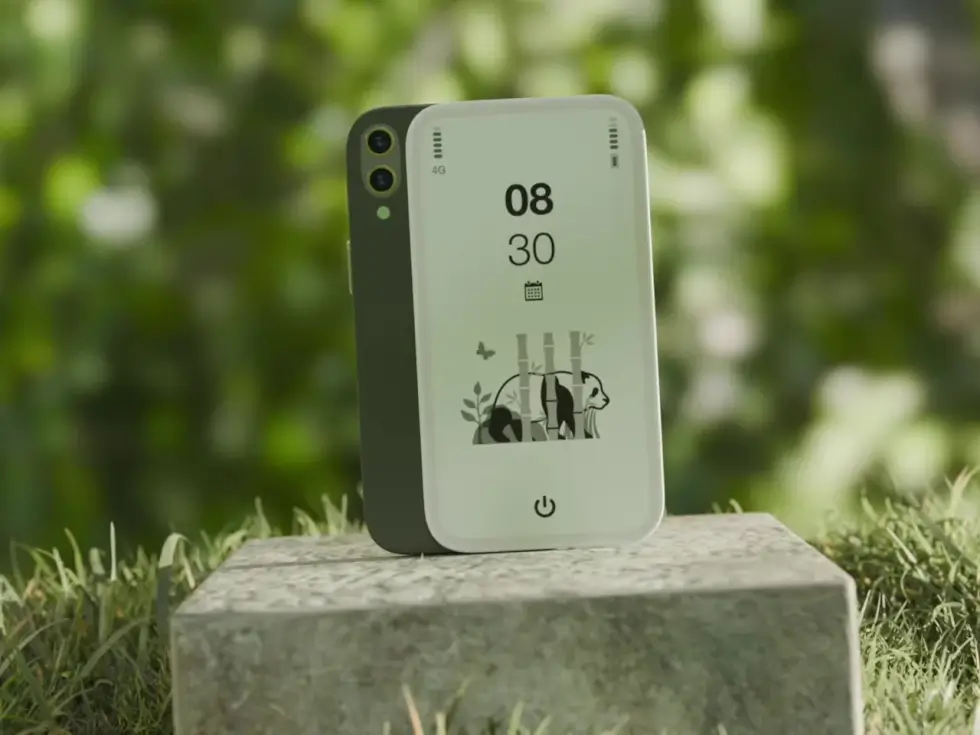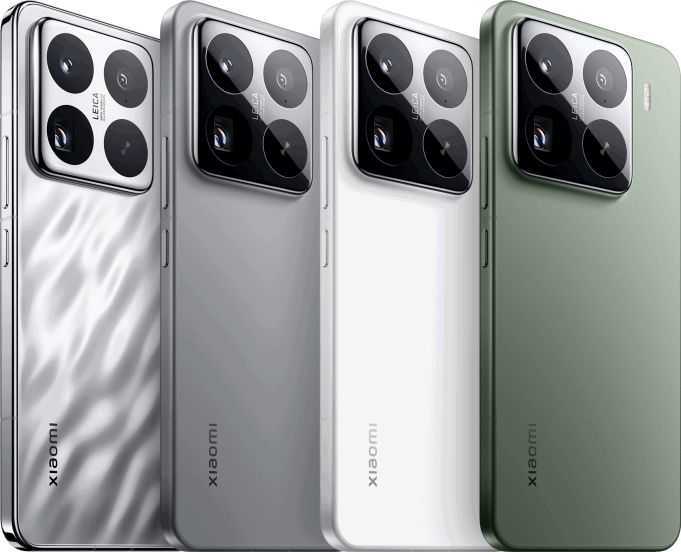The Bose Frames ($200) are Bose’s first dive into eyewear. They’re sunglasses — available in two styles of frames, round (Rondo) or square (Aldo) — with speakers built into each arm.
Since the Bose Frames don’t rely on an earbud or ear pad that goes in or over your ear, the audio has a wider soundstage. That means the sound is more accurate to what the artist intended. There’s an augmented reality angle, too, or at least there will be. The company says the glasses will eventually give wearers audio cues, helping them navigate from place to place or identify interesting landmarks or restaurants. However, the Bose Frames aren’t able to do any of that just yet (and no ETA has been set). Essentially, they’re sunglasses that look like normal sunglasses, but they also can replace your wireless headphones.
The Good: The Bose Frames don’t look obnoxiously techie, so most people won’t be able to tell they aren’t “normal” sunglasses. That said, the sound quality is probably the most impressive thing about them. The clarity and expansiveness of the audio make the Bose Frames sound as good as many over-ear headphones — arguably better. Integrated mics mean you can answer calls and talk on the phone while wearing them.
The setup process is painless and the battery life of the glasses is pretty good. When you take them off and place them upside down, they’ll go in a standby mode to conserve battery life, which is a convenient feature. Lastly, the price is reasonable. Most nice sunglasses go for between $150 and $200, or more, and the Bose Frames hit that mark — plus they play music.
Who It’s For: Anybody that really likes Bose or wants something innovative and truly unique. The truth is that most people already have headphones and sunglasses they like, and thus, they won’t need Bose Frames.

Watch Out For: If you’re in a quiet room and you’re playing music at 75 percent or louder, other people in the room will be able to hear it. You have to be wearing sunglasses to listen to music, meaning you won’t be using them at night (unless you’re Corey Hart).
There’s less bass than you’d expect from Bose headphones. The sunglasses aren’t polarized and they aren’t made with acetate, so they don’t feel like high-end sunglasses. They also require a proprietary magnetic charger, so if you forget yours, you can’t ask to borrow somebody else’s. Perhaps the biggest bummer is that the augmented reality features aren’t functional yet.
Alternatives: The Bose Frames are a one-of-a-kind and there really isn’t anything else like it.
Review: You can get really ‘in the weeds’ talking about the Bose Frames, hitting on things like materials, lens type, overall design and sound signature, as well as how its augmented reality features aren’t available yet. (And when AR gets here, how will that work? And will it be useful? The truth is: I don’t know.) But, I’d argue, there’s something more important: how they make you feel.
When I received my sample for review, I asked people — colleagues, family and friends — to put them on. After a few seconds, I started playing music. And the reaction of every single person was the same: an open-mouthed smile with a look of “wow” on their face. And that’s what I think is the most important take away from the Bose Frames. They give the wearer a feeling of awe, at least for the initial few seconds, and that shouldn’t be understated.
The sound isn’t bad. Like, at all. In fact, I’m guessing that most people will prefer the lucid, more spacious sound of the Bose Frames than the audio from their current over-ear headphones. My issue was sound bleed. In most situations, unless the person’s face is right near year own, I found that they wouldn’t hear your music. Which is what you want. Nobody wearing over-ear headphones or earbuds wants you to hear what they’re listening to. But if you play anything at approximately 75 percent volume, and you’re in a quiet room, then they’re going to hear it. Bose’s team of audio engineers designed the speakers in the Bose Frames in a way so that people around you can’t hear your music. Tt works pretty well, just when you’re music is being played really loudly. It’s just a reality of the open-air design.

So, the Bose Frames shouldn’t be worn at night. And they’re not really for those who are overly self-conscious of other people hearing their music. (Although, I’d counter this by saying this should only be a factor if you generally listen to music loudly and you’re in a quiet place, like an office or the quiet car of a train.) Those two reasons probably rule out Bose Frames for most people. But I think most people could surmise these things before going into it. These are niche sunglasses, not headphones that you’d wear for every second of every day.
Now, let’s talk about the sunglasses part.
When I asked people to try on the Bose Frames, very rarely did any of them think they were anything other than normal sunglasses with Wayfarer or Round frames. There were a few, of course, who picked out the “larger than normal” arms, but a lot had no idea. And that’s why that initial feeling of awe for many of them was so profound. That said, even though the Bose Frames look like really nice sunglasses, I’d argue that they aren’t as nice as the $200 pair you probably own.
The lenses aren’t polarized, although Bose does say that they offer UV protection. And even though they’re made from “ultramodern material,” they feel a little like plastic — not the acetate that most high-end eyewear is made out of. I’m not saying that the Bose Frames feel exactly cheap, but they’re definitely different than other $200 sunglasses.

As for me, I’ve been wearing Bose Frames for the last few weeks, walking around New York and commuting on the train, and they’ve pulled the weight of two: both my AirPods and sunglasses. However, from a style perspective, I think I still prefer the $170 sunglasses by Smith (here) that I already own. And from a convenience standpoint, I still like my AirPods. Though the Bose Frames do put up a decent fight against them both. Oddly enough, I found that they Bose Frames made pretty excellent running headphones (IPX2 rated), though I’m not the type of person who usually wears sunglasses while exercising.
Verdict: The Bose Frames work and they work well. They’re sunglasses that double as wireless headphones. The big question is, ‘are we ready for the combo?’ Most people already have headphones that they like. That’s even more true with sunglasses. So the Bose Frames have to compete to be part of people’s personal style and tech — two fronts — and that’s a big ask. That said, I think the Bose Frames still have more boxes it needs to check. They need to come in more styles and, more importantly, with more lens options. Prescription and transition lenses both seem like no-brainers, as it would instantly open the Bose Frames up to more people and make them more practical to wear more often. And there are the AR features still yet to come, which is an unknown factor as of right now. Listen, the Bose Frames are neat and Bose is definitely close to getting right, but right now they still feel a little like a first-generation product. It’s going to be really interesting to see how “generation two” looks.
What Others Are Saying:
• “As a debut effort, the Bose Frames are more than just a novelty — at least they actually work. But not well enough yet. Plus, you probably shouldn’t be wearing your sunglasses at night or at the gym (unless you’re super thick-skinned), which kind of limits their usefulness. Bose says it intends to make prescription lenses or clear options available as well as implement the audio technology into other formats like bike or ski helmets. But for now, you’re better off just waiting for a second-generation model or the promised updates.” — Cherlynn Low, Engadget
• “The Bose Frames are the coolest headphones you didn’t know you needed, and their $199 price places them within (relative) reach. Now that I’ve had a chance to try them on and take them for a spin, without being on a guided tour, as I was last year, I’ve gained a serious respect for Bose for making Frames a reality.” — Henry, T. Casey Tom’s Guide
• “We think that the Bose Frames are the first smart glasses that are worth it, especially if you’re the type of person who is constantly listening to music or podcasts. Obviously, you could just wear regular sunglasses and headphones together, instead of shelling out $200 for them.” — Brandon Carte, Best Products
Key Specs
Frames: Aldo (larger, square), Rondo (smaller, round)
Bluetooth range: 30 feet
Battery charging time: Up to 2 hours
Battery life: Up to 3.5 hours of streaming music playback
App: Bose Connect (free)




